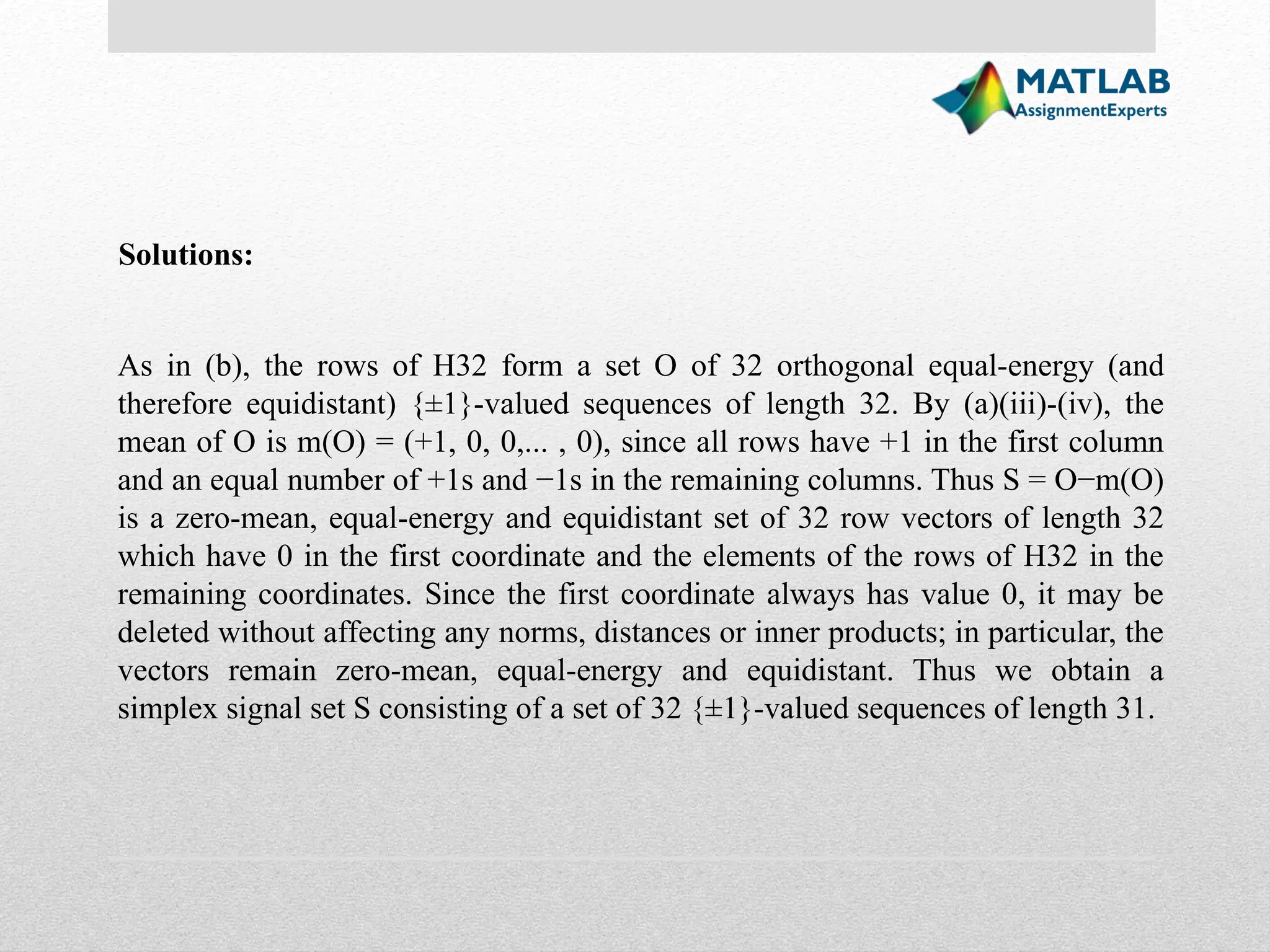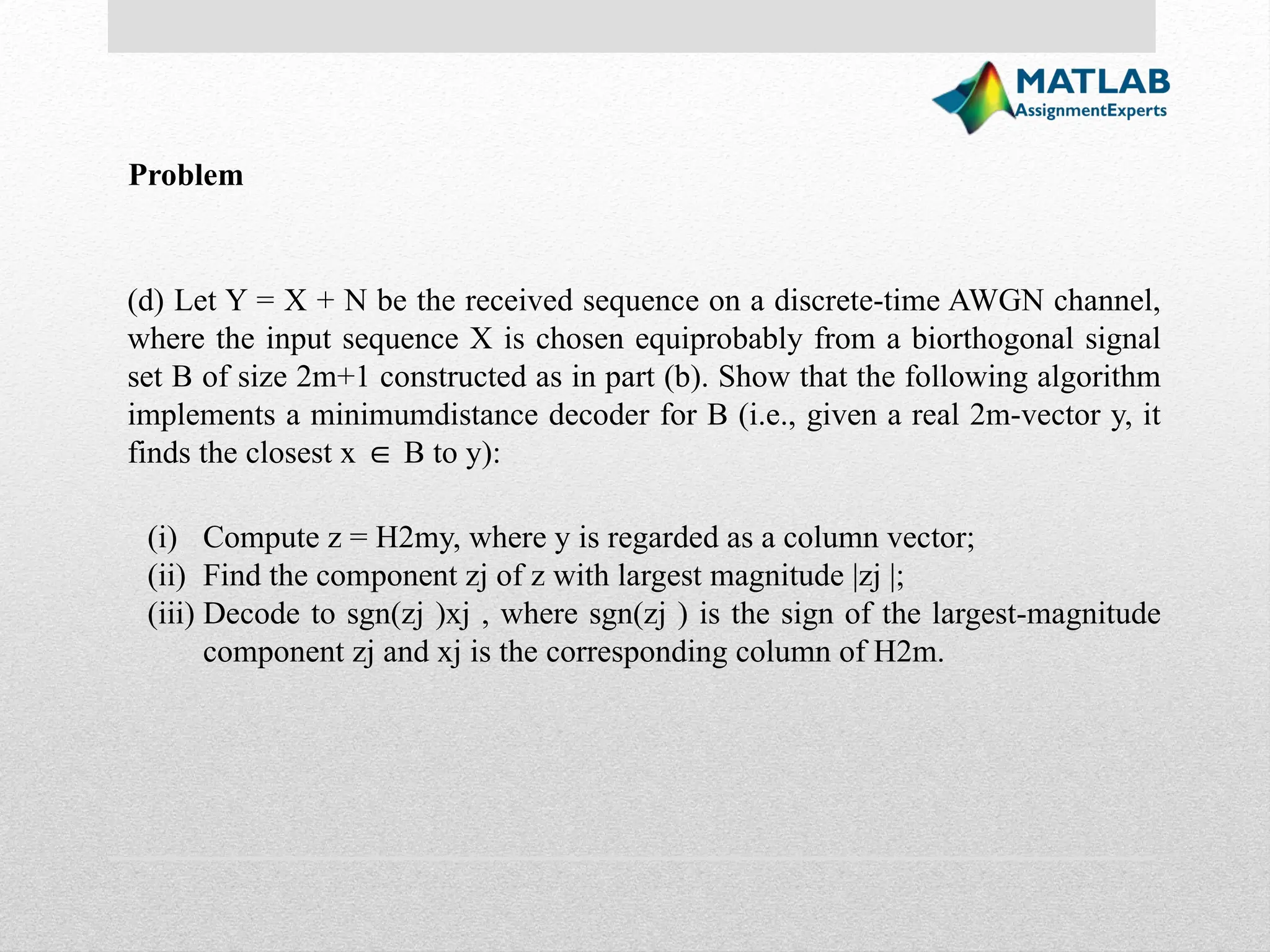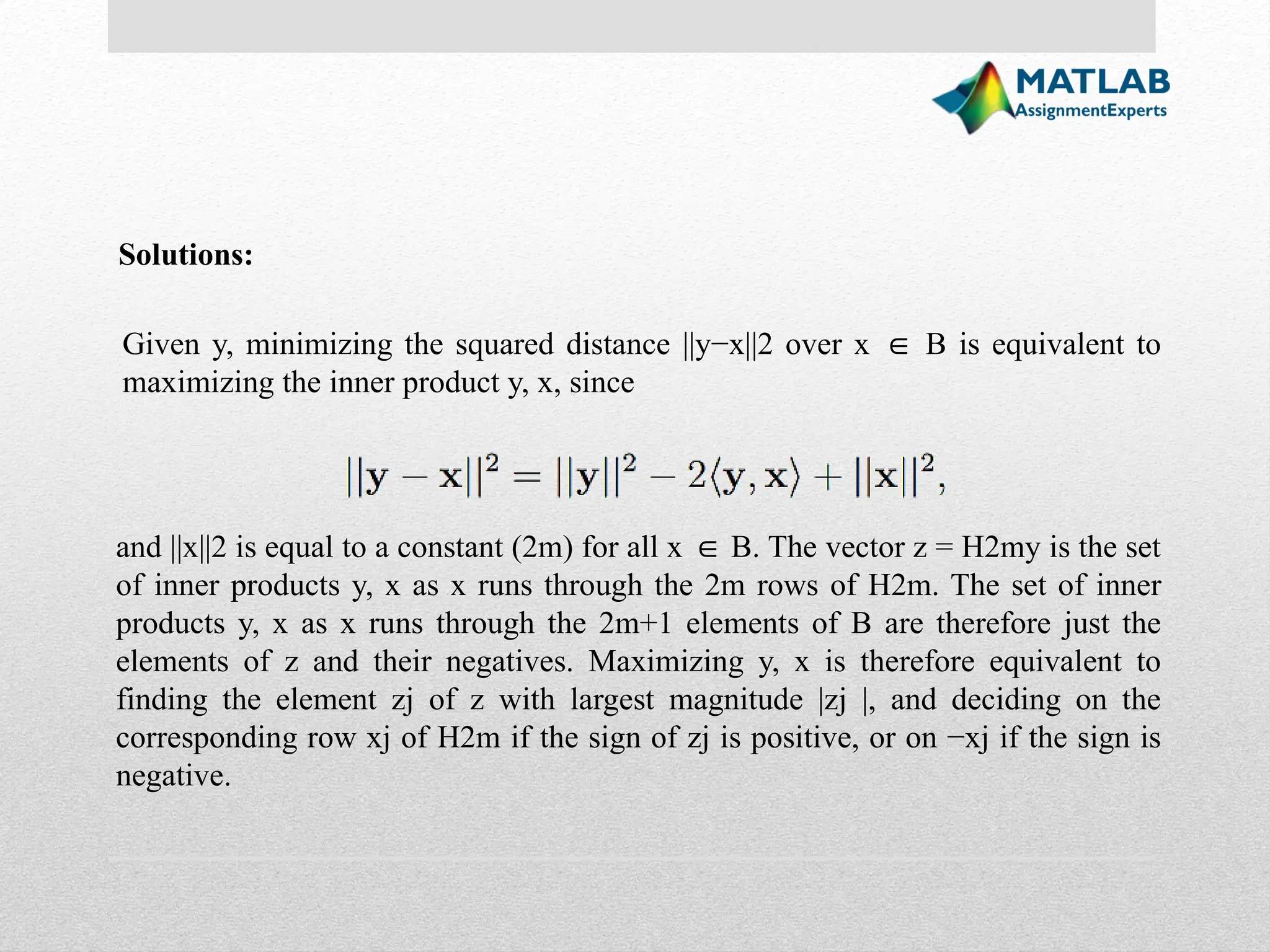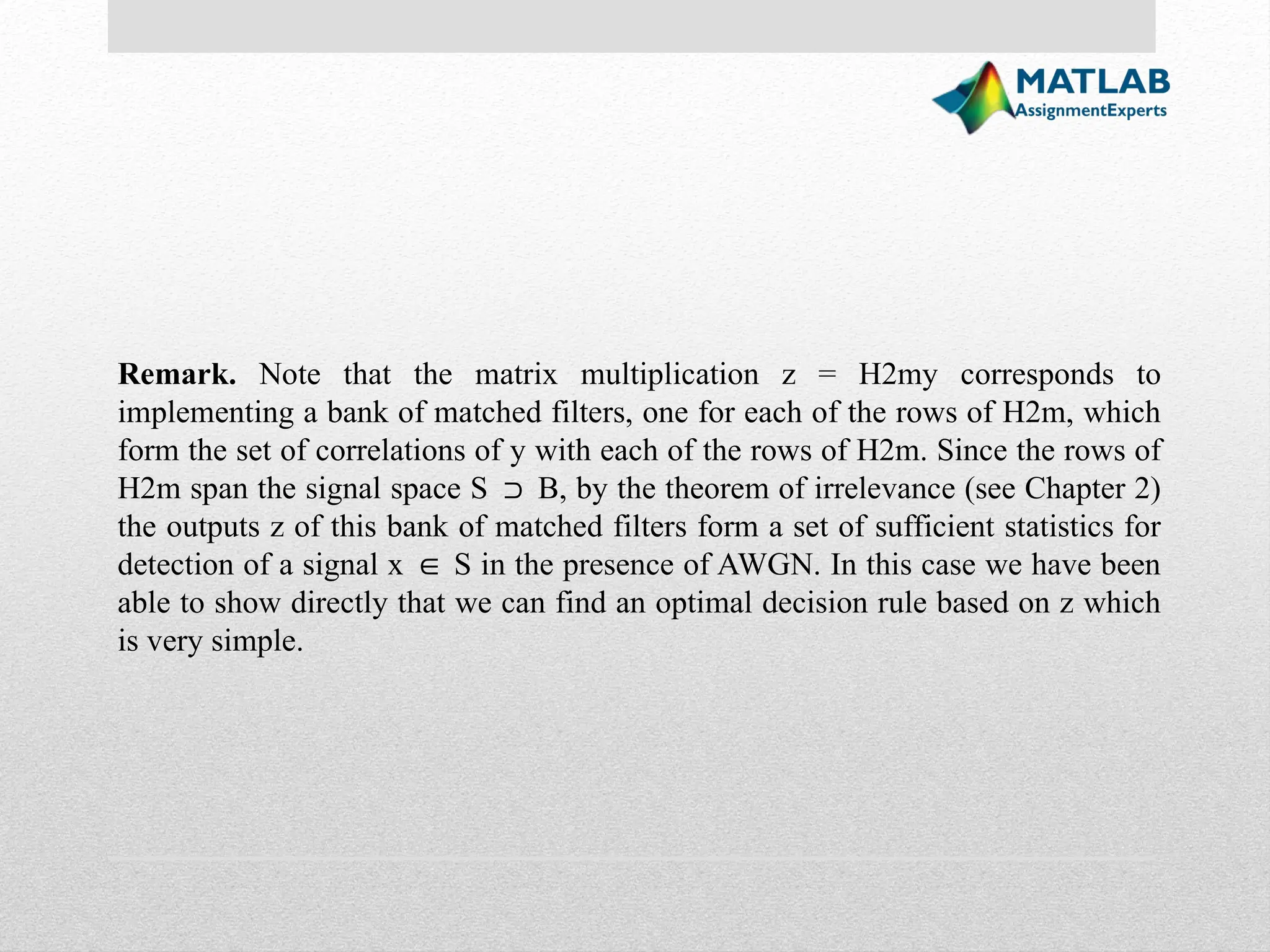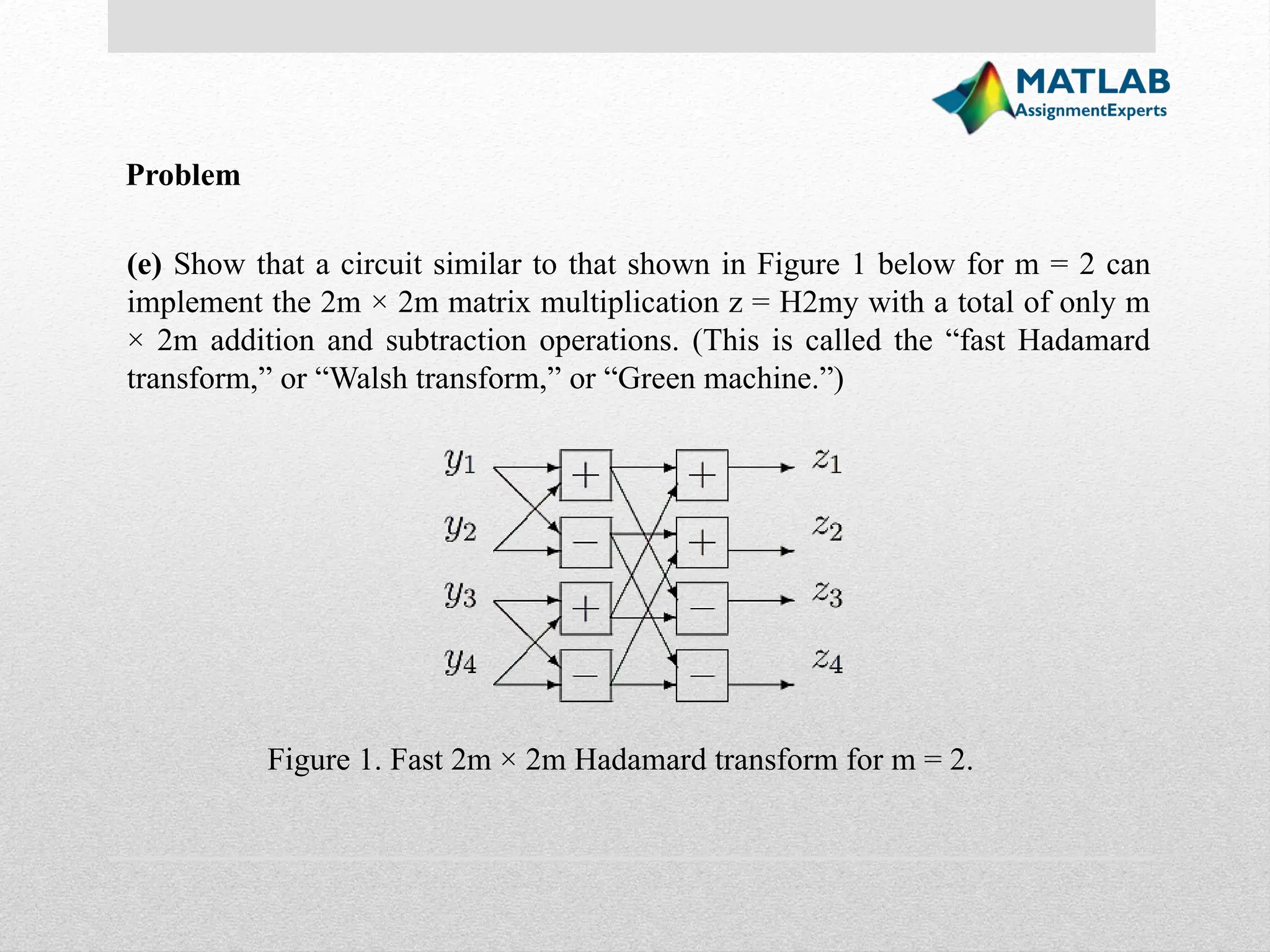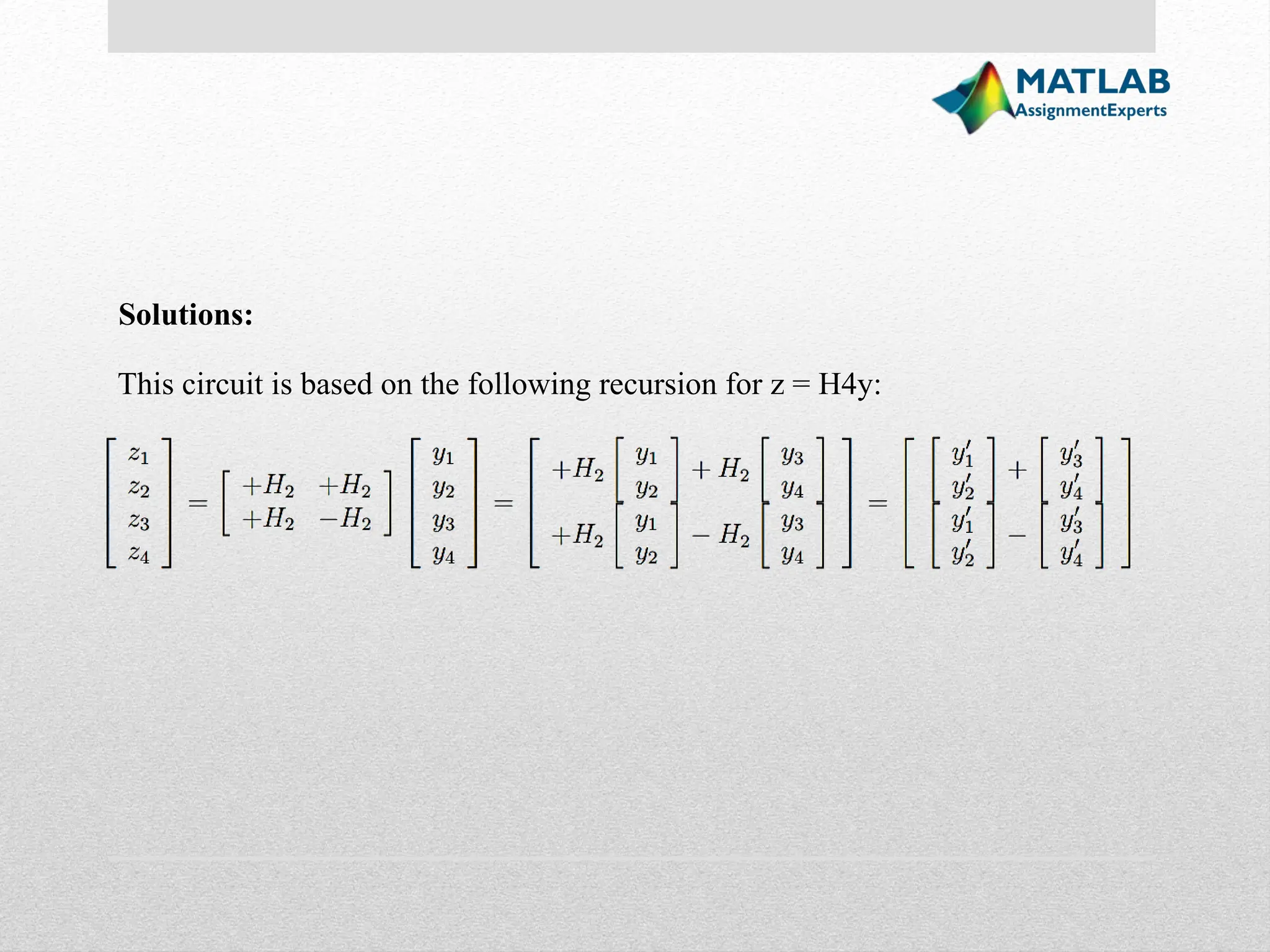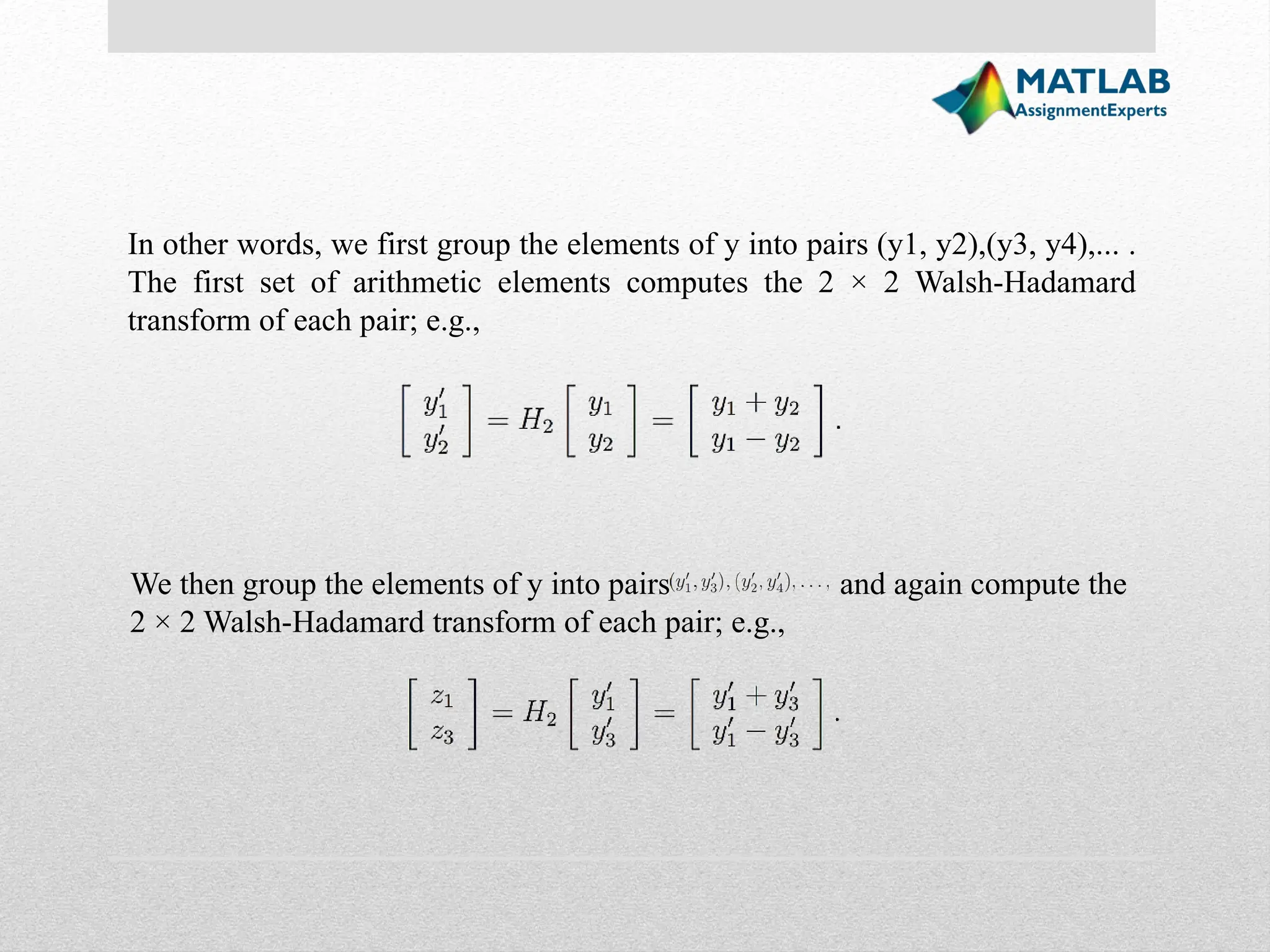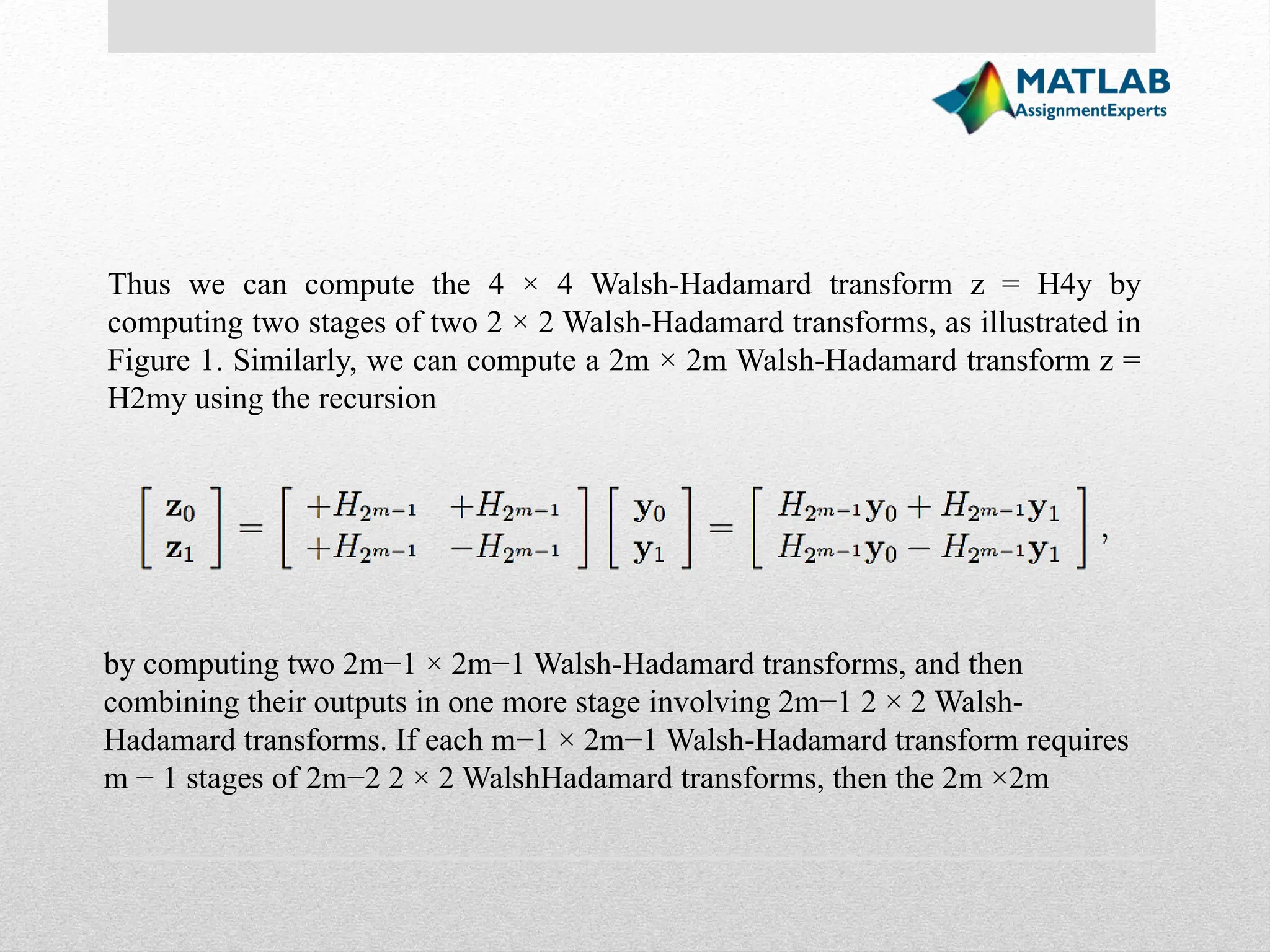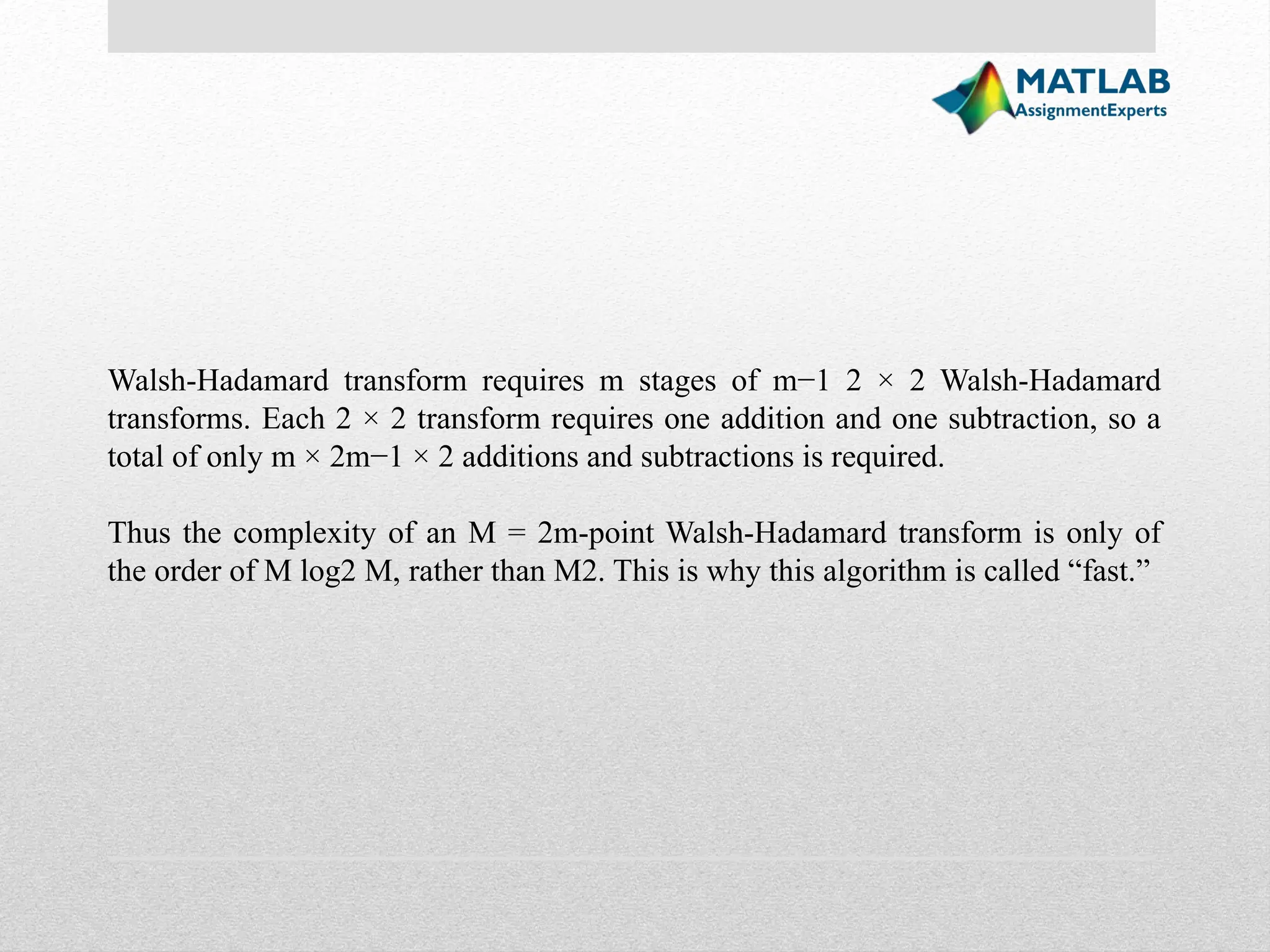The document discusses the construction and application of biorthogonal codes, focusing on the properties of Hadamard matrices and their significance in digital communication systems. It covers problem-solving methods associated with doubling money at various interest rates using linear approximations and presents proofs related to Hadamard matrices and biorthogonal signal sets. Additionally, it provides algorithms for minimum-distance decoding in noise channels and introduces efficient circuits for implementing the Hadamard transform.


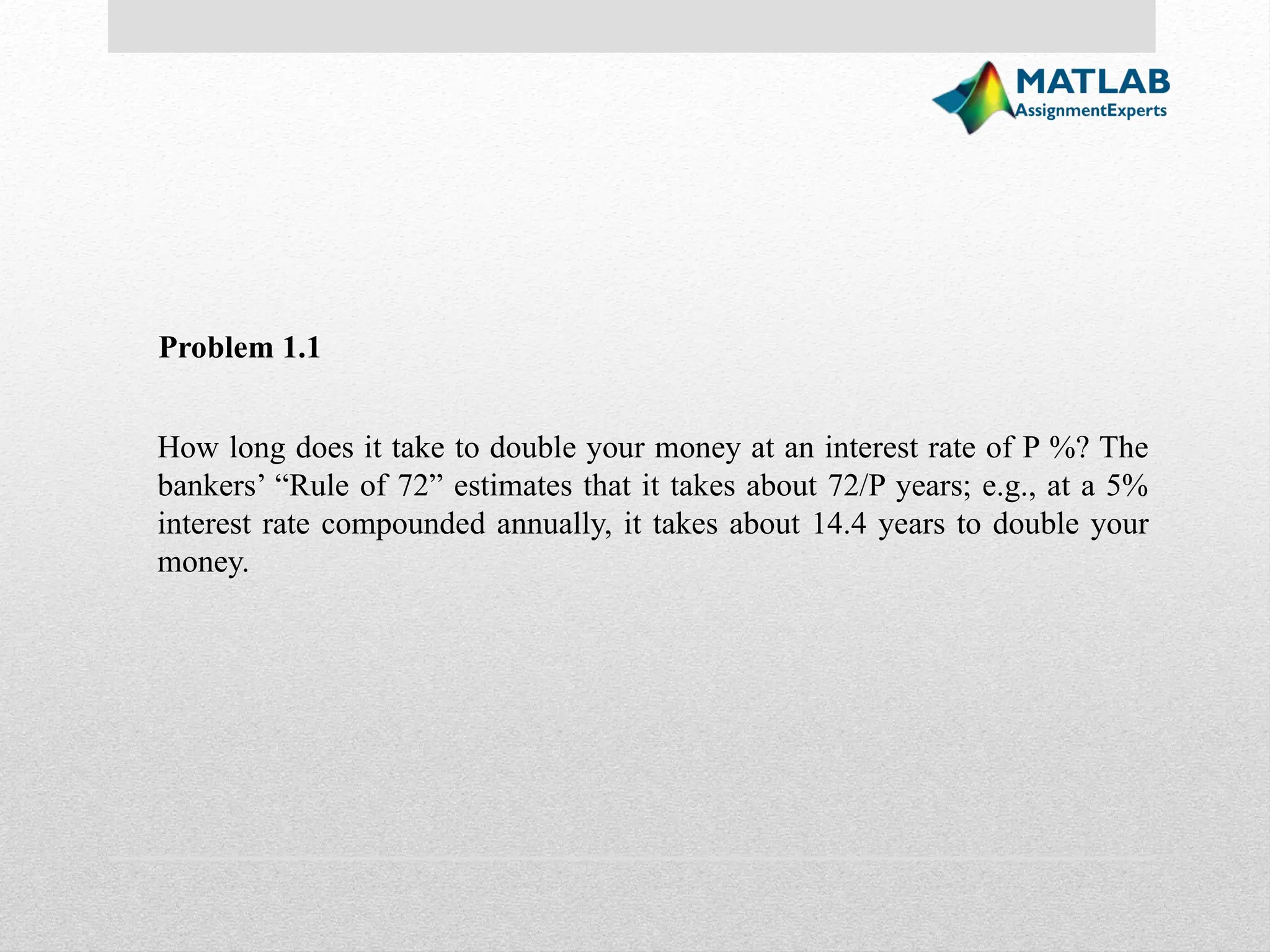
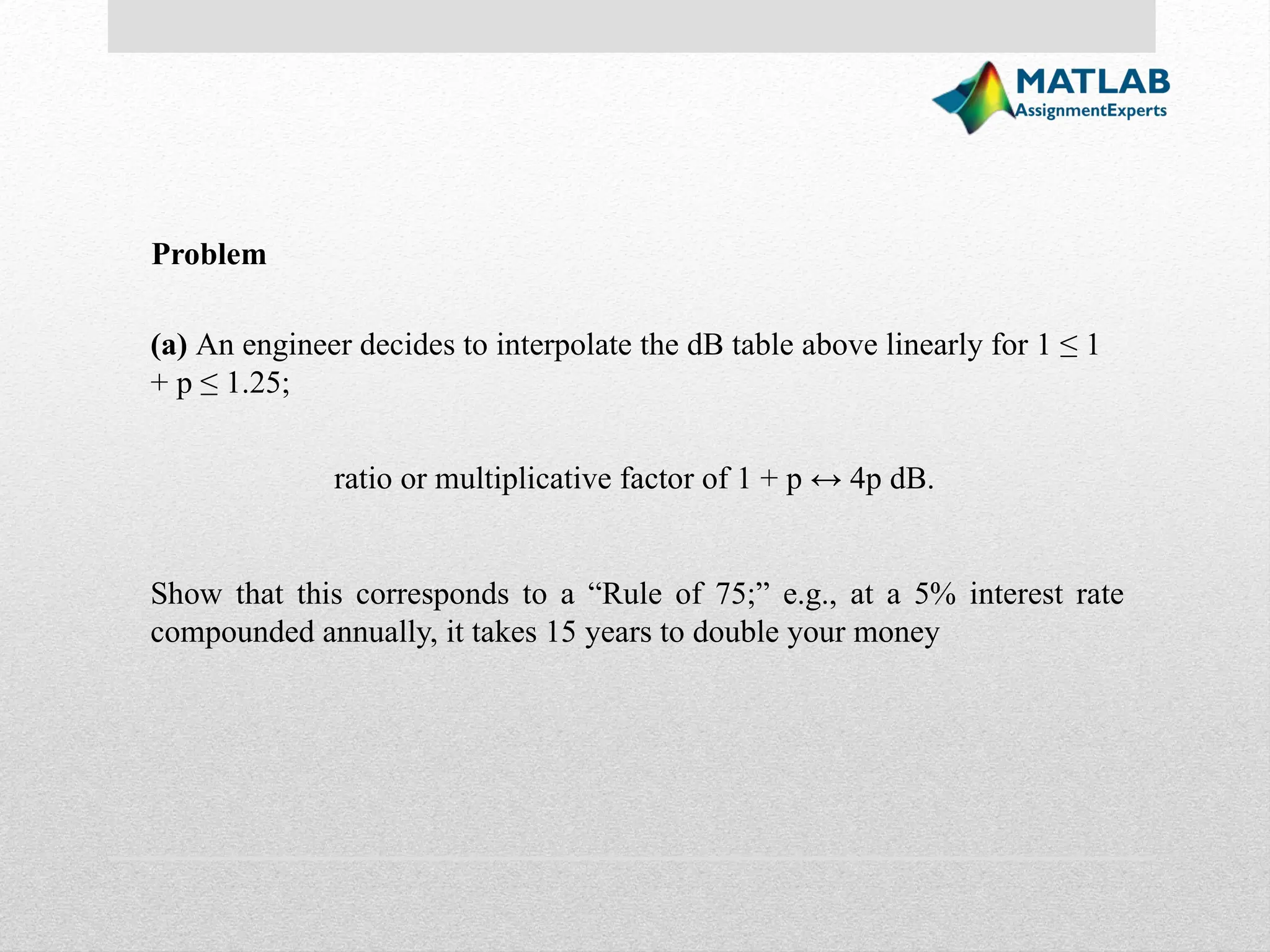
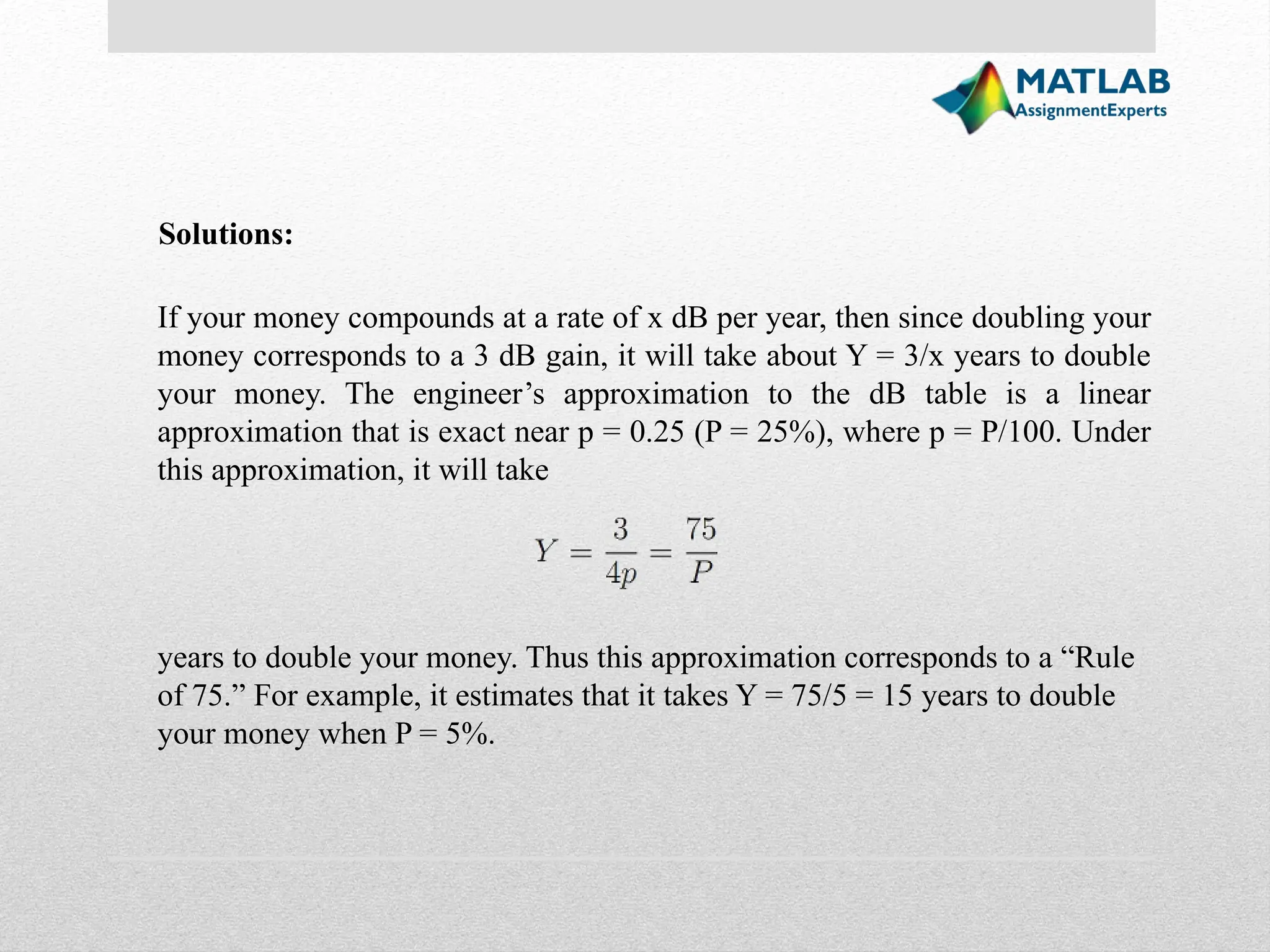
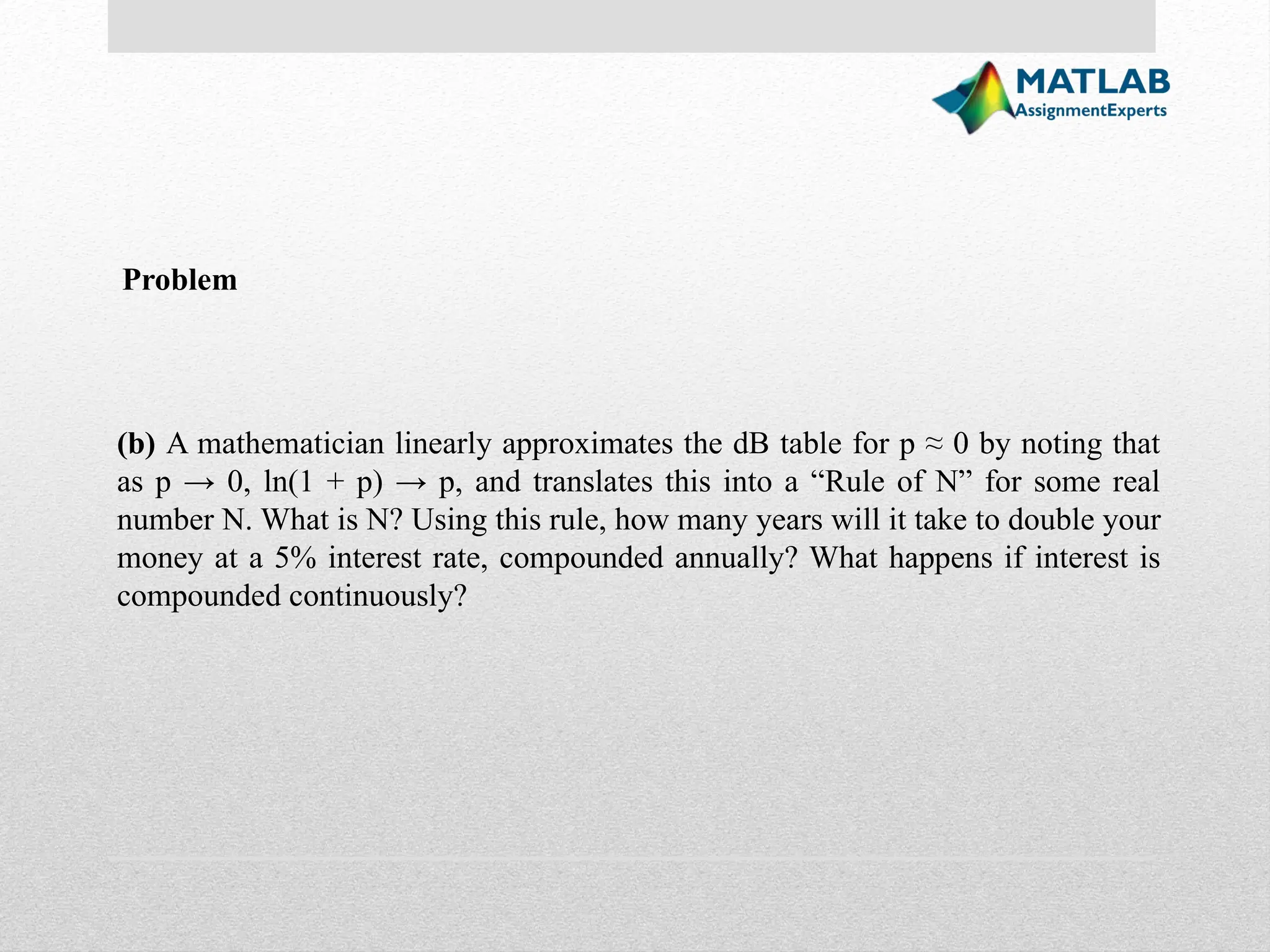
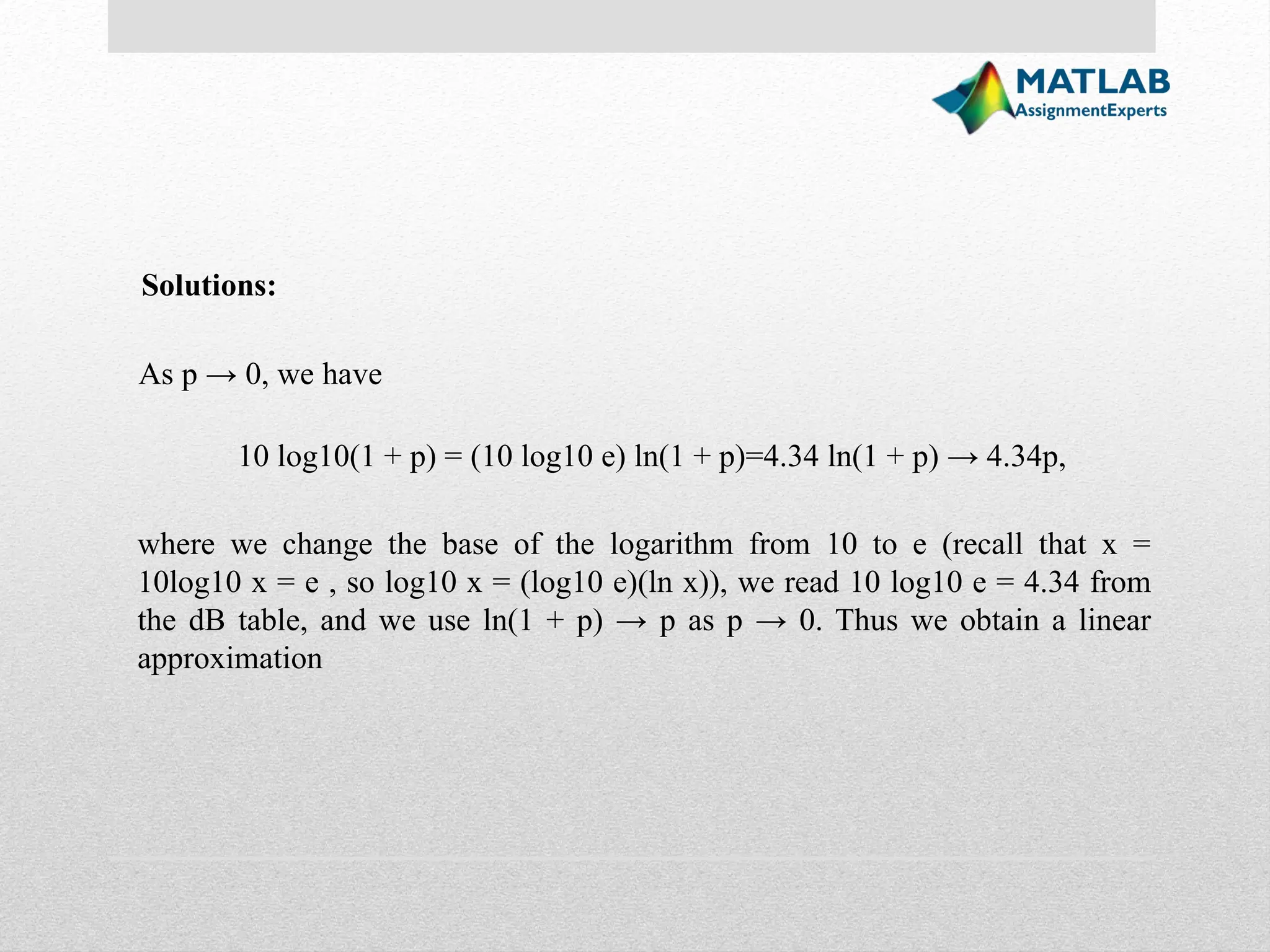
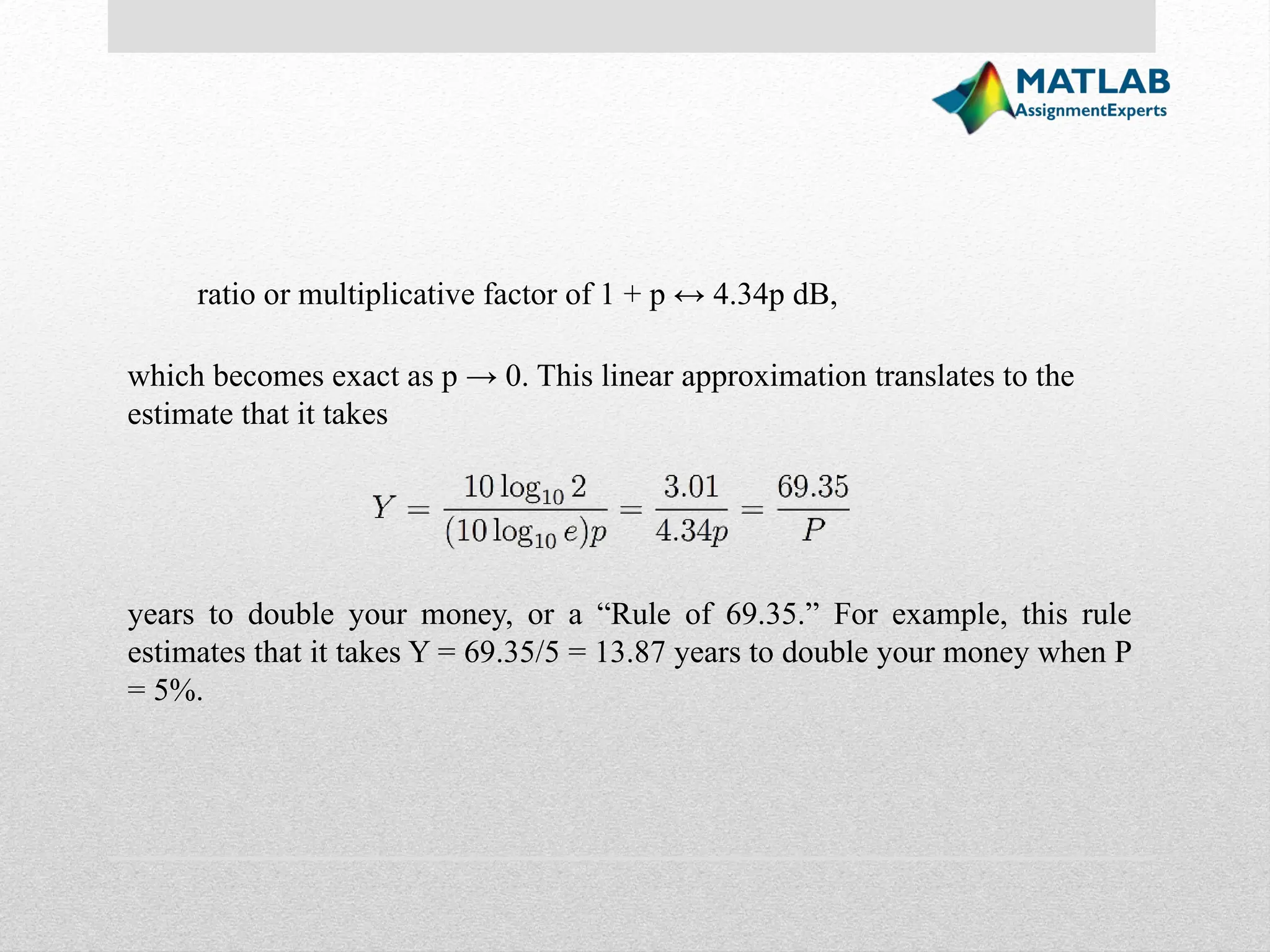
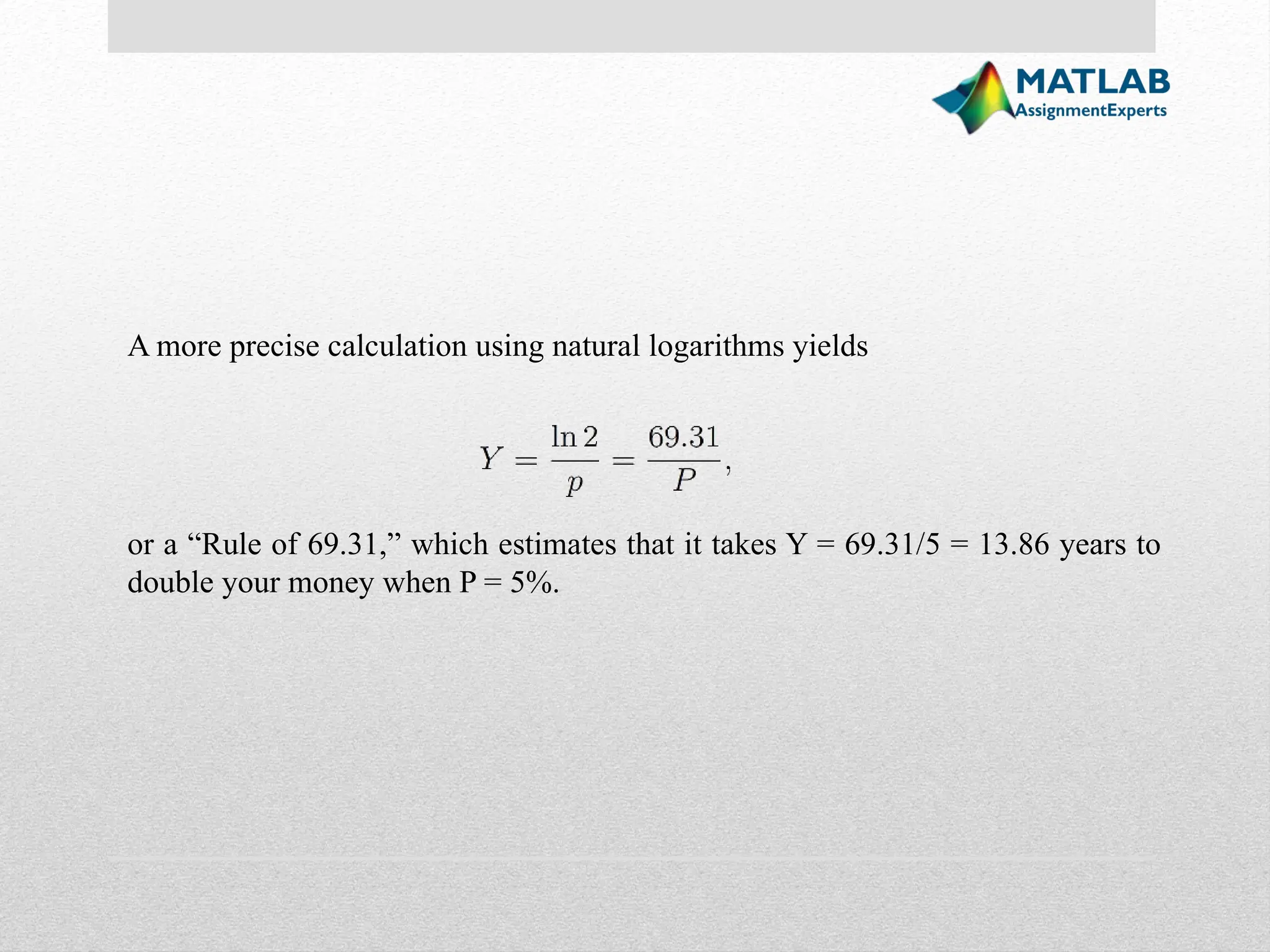
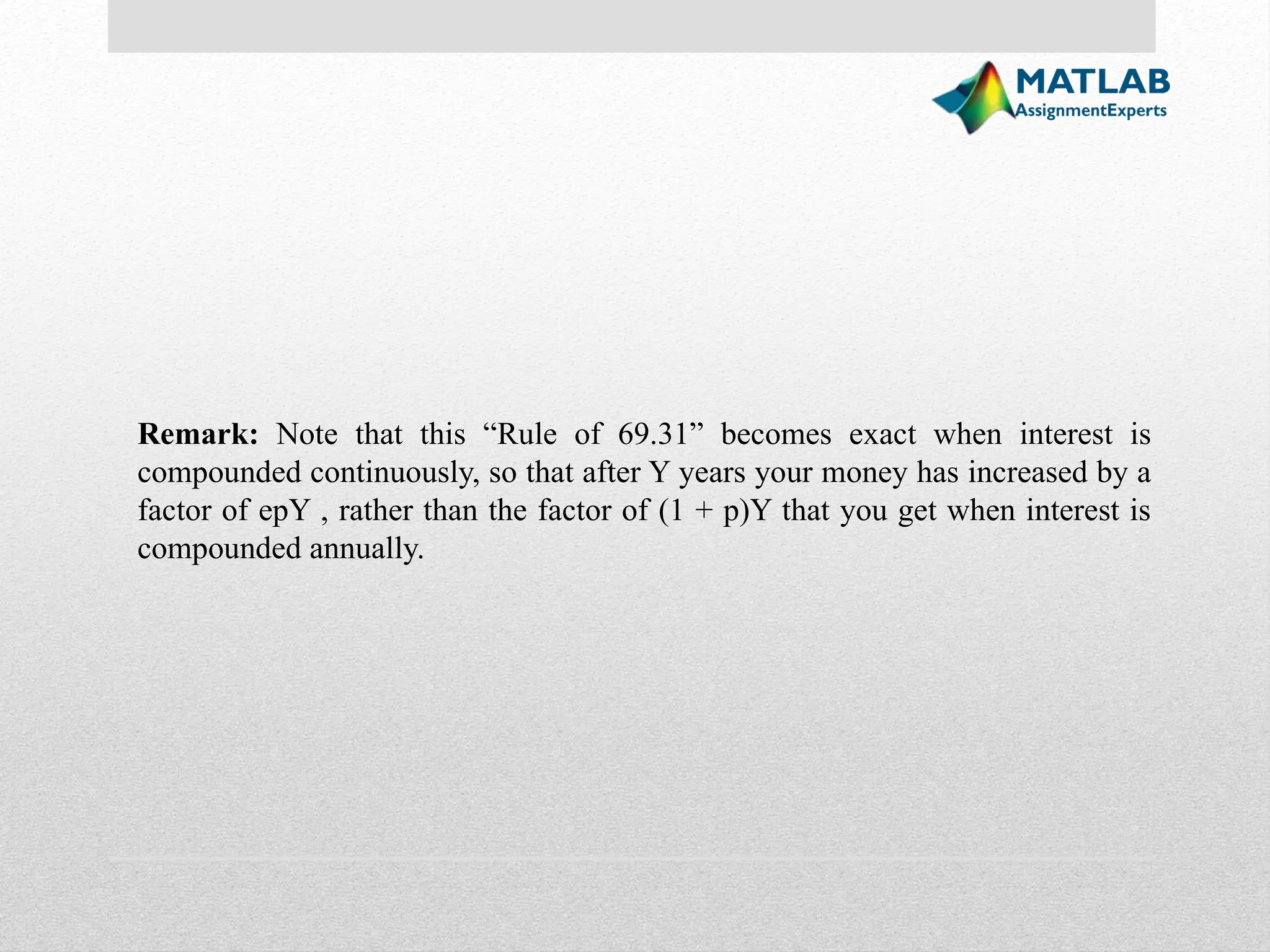
![(c) How many years will it actually take to double your money at a 5% interest rate, compounded annually? [Hint: 10 log10 7=8.45 dB.] Whose rule best predicts the correct result? Problem](https://image.slidesharecdn.com/digitalcommunicationthroughbiorthogonalcodes-240809075237-0183ab5b/75/Digital-Communication-Through-Biorthogonal-Codes-A-MATLAB-Assignment-Solution-11-2048.jpg)
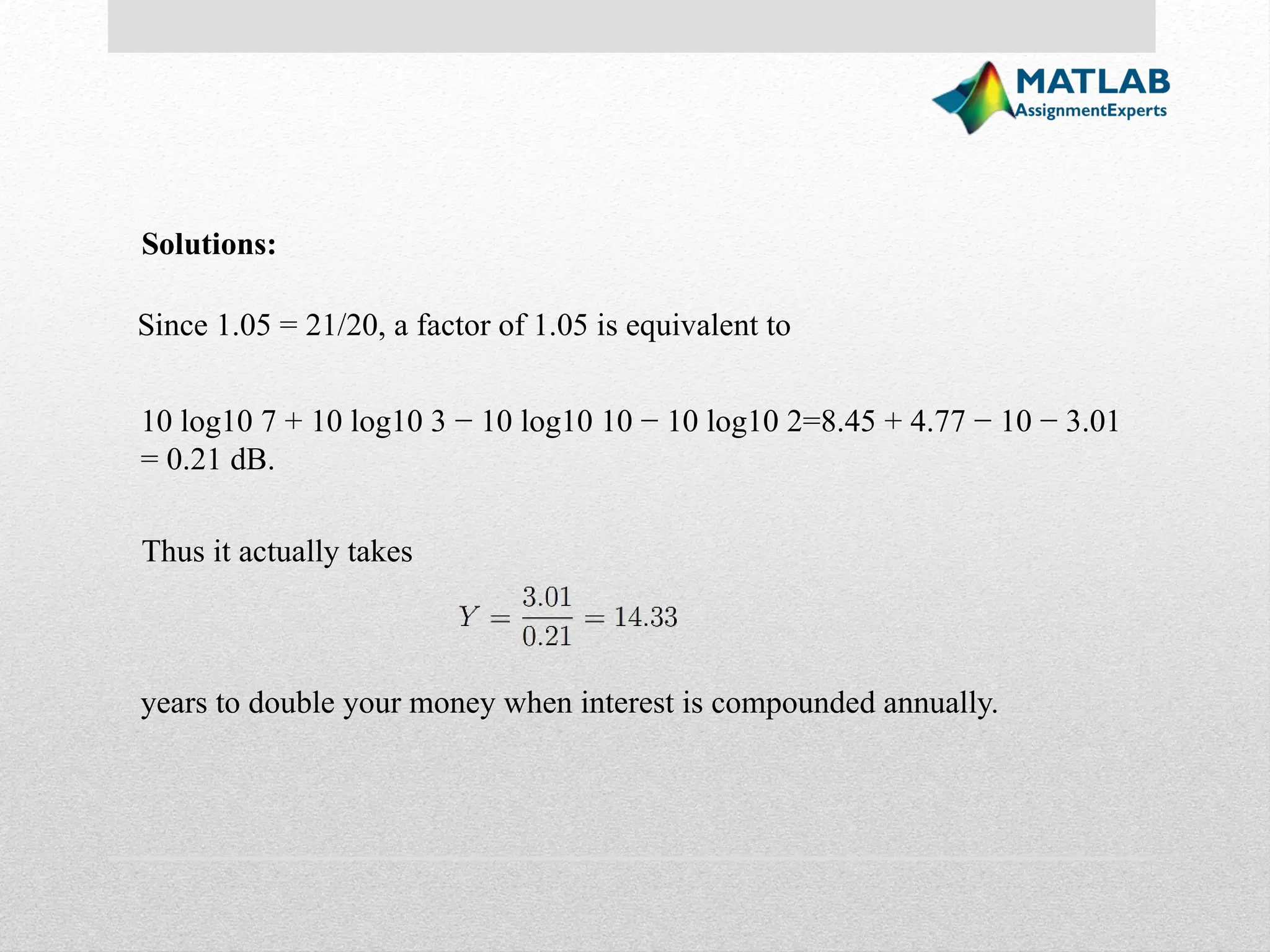
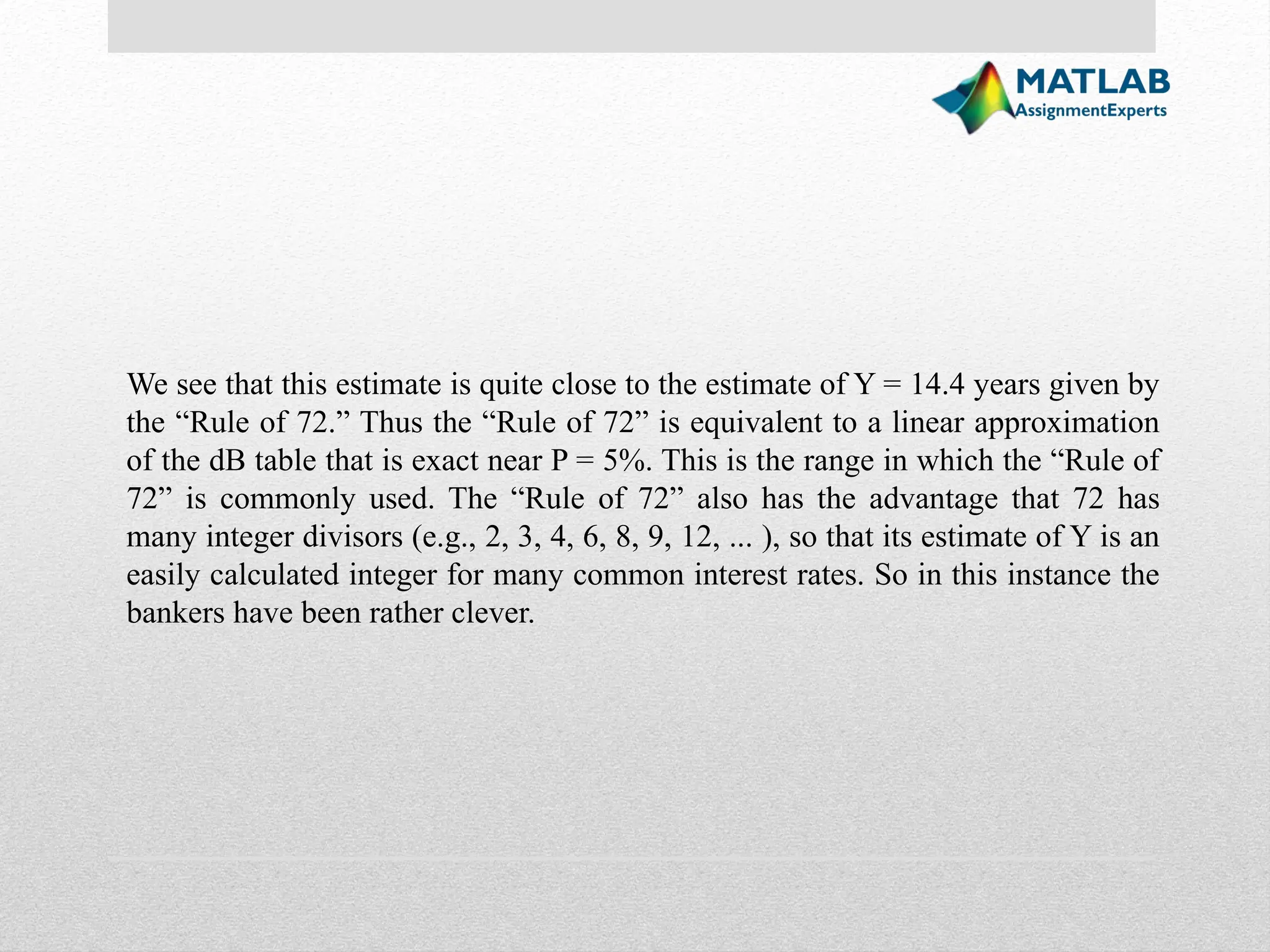
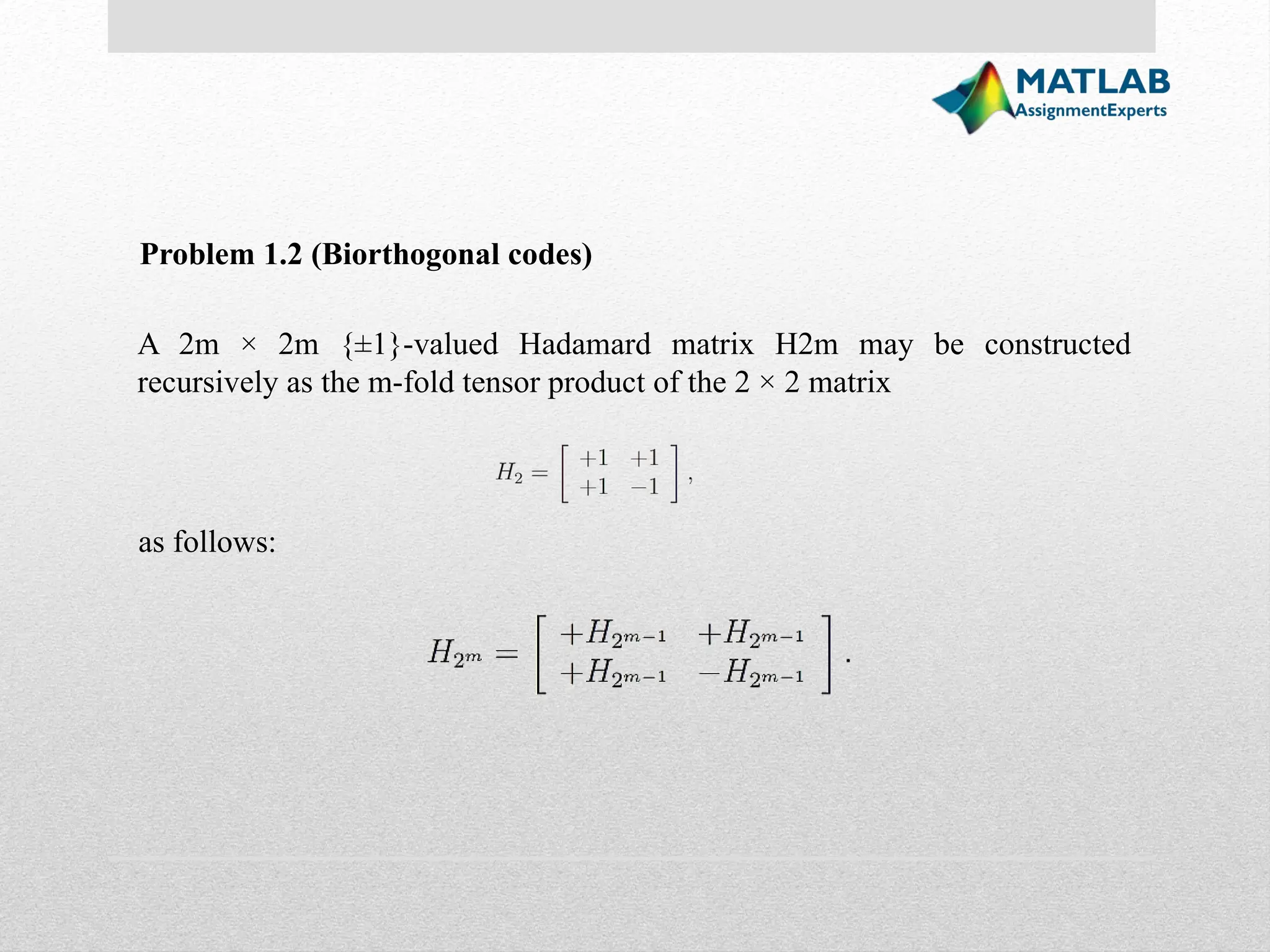
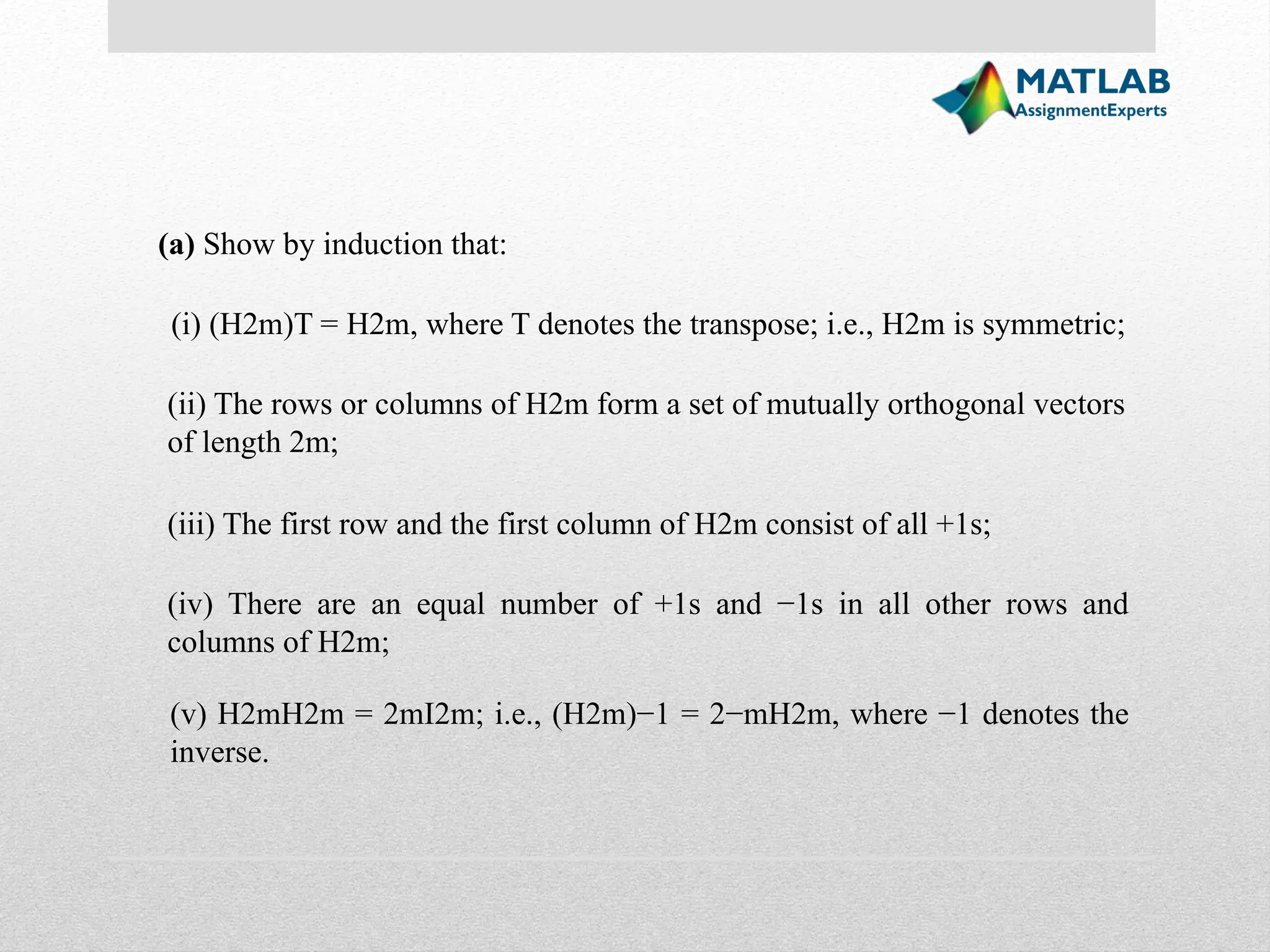
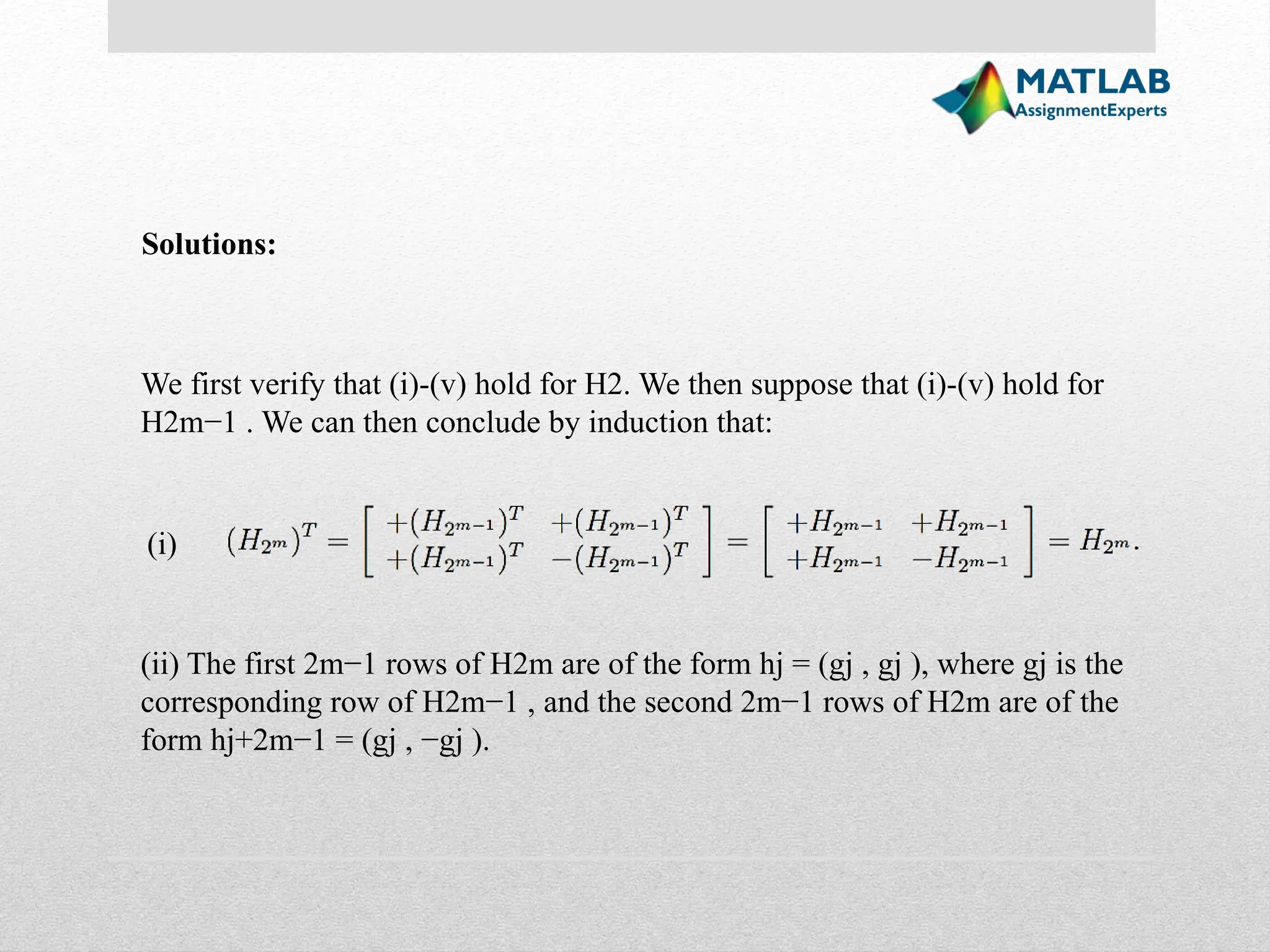
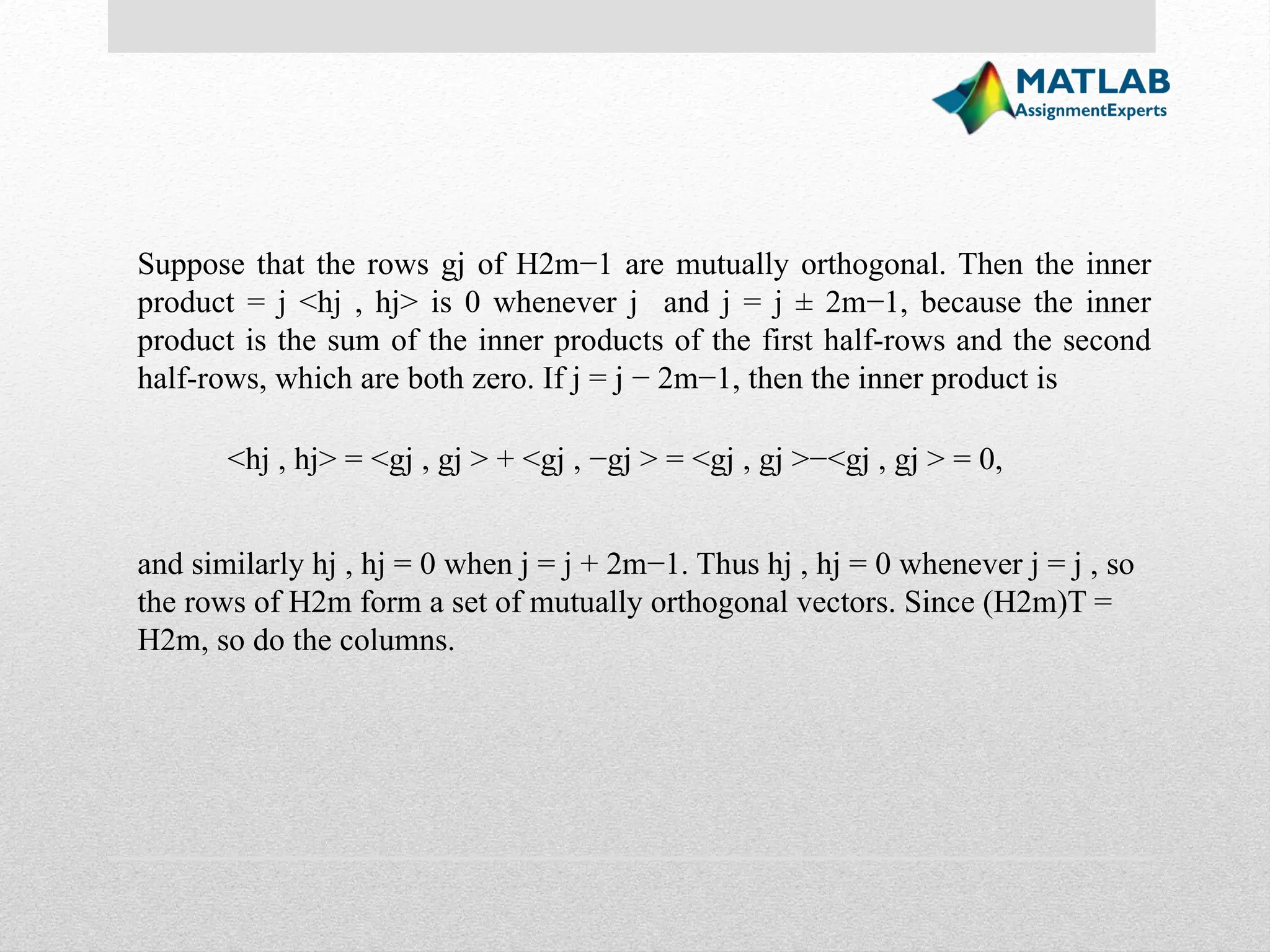
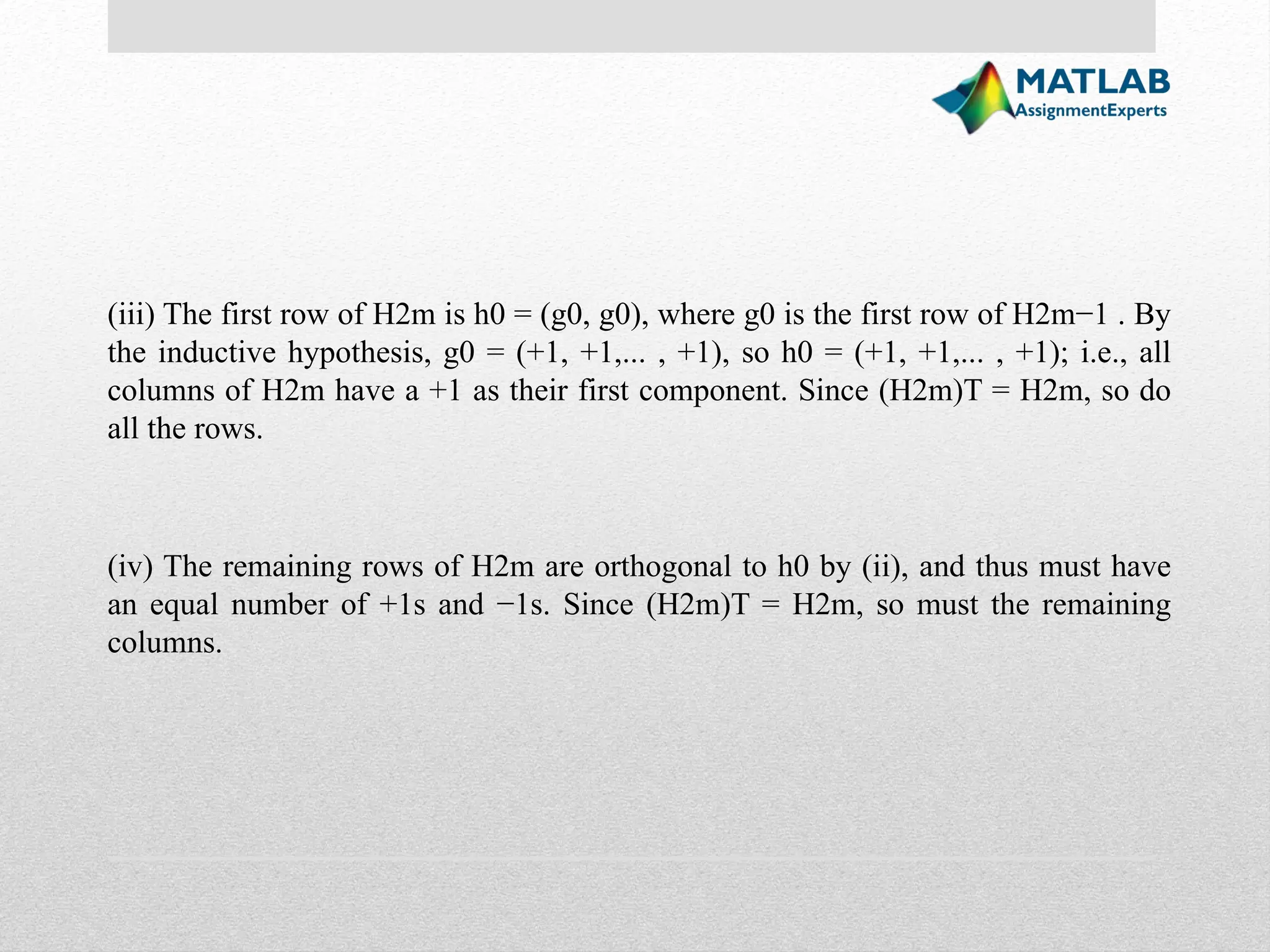
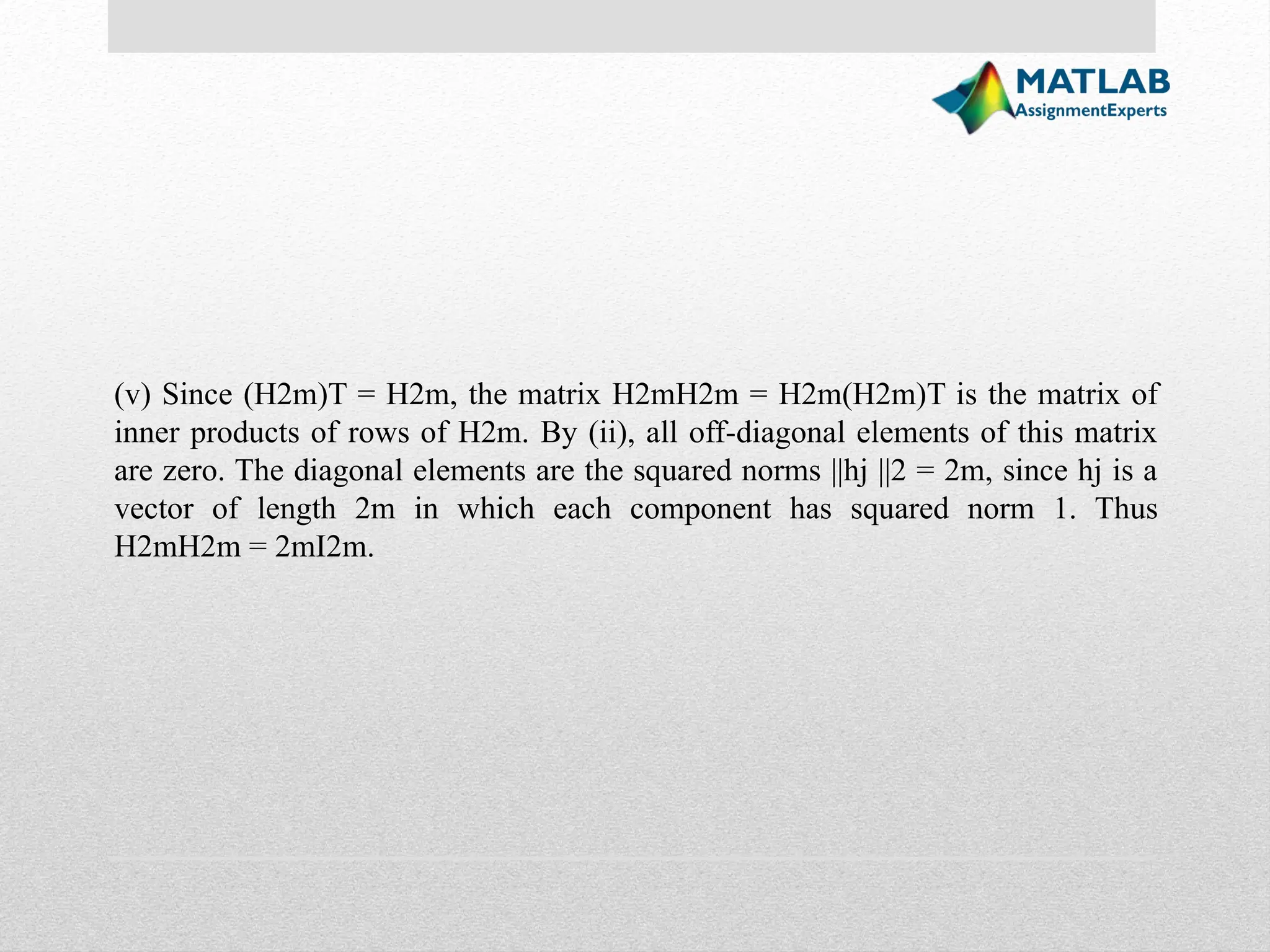
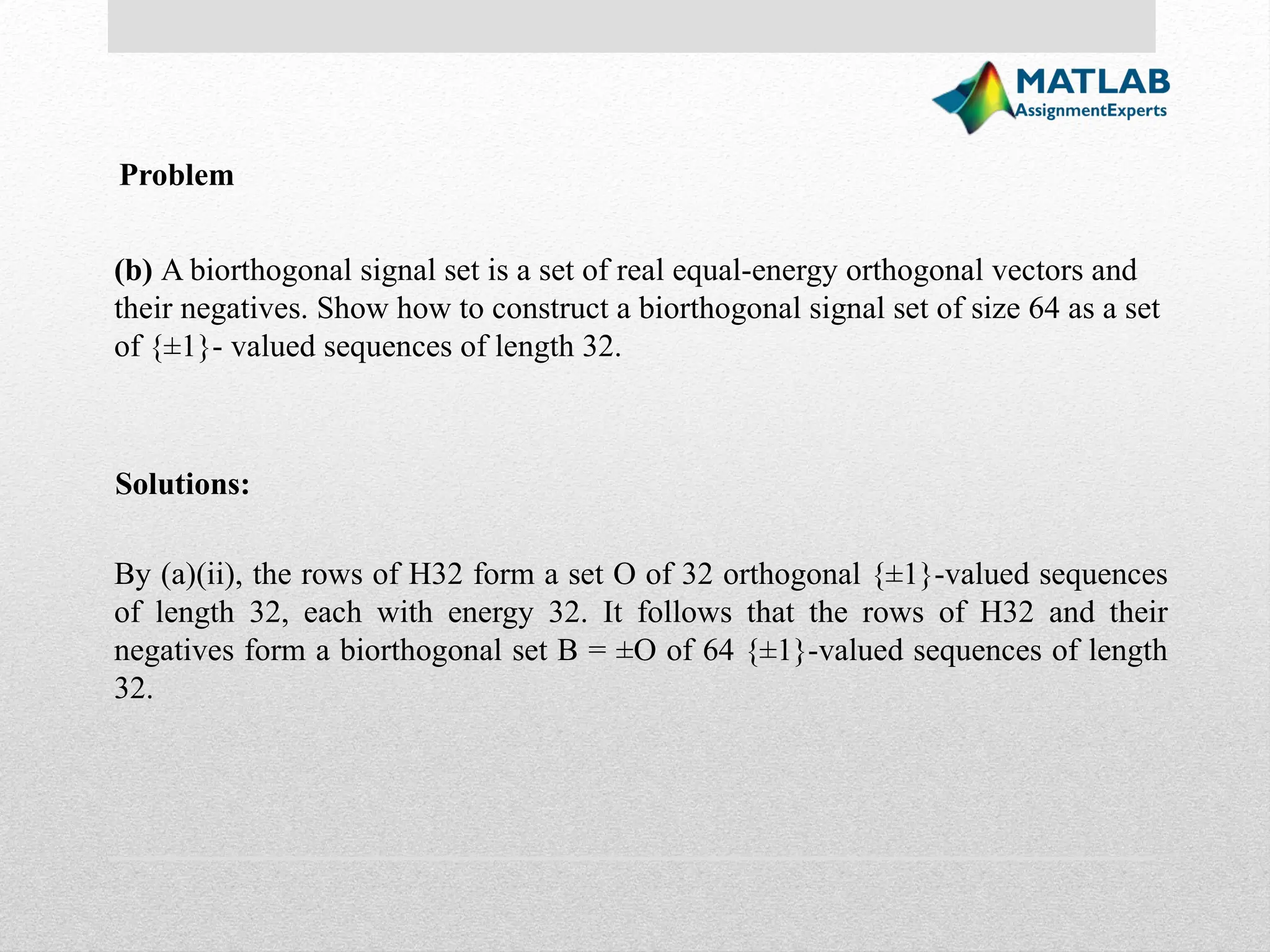
![(c) A simplex signal set S is a set of real equal-energy vectors that are equidistant and that have zero mean m(S) under an equiprobable distribution. Show how to construct a simplex signal set of size 32 as a set of 32 {±1}-valued sequences of length 31. [Hint: The fluctuation O − m(O) of a set O of orthogonal real vectors is a simplex signal set.] Problem](https://image.slidesharecdn.com/digitalcommunicationthroughbiorthogonalcodes-240809075237-0183ab5b/75/Digital-Communication-Through-Biorthogonal-Codes-A-MATLAB-Assignment-Solution-21-2048.jpg)
